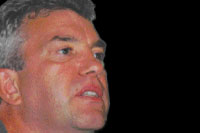» Behaviour

Behavioural challenges in children and adults with CdLS
 By Prof. Chris Oliver (School of Psychology, University of Birmingham, UK), Dr. Jo Moss (Department of Psychology, Institute of Psychiatry, King’s College London, UK), Lisa Collis (School of Psychology, University of Birmingham, UK) and Dr. Jane Petty (School of Psychology, University of Birmingham, UK).
By Prof. Chris Oliver (School of Psychology, University of Birmingham, UK), Dr. Jo Moss (Department of Psychology, Institute of Psychiatry, King’s College London, UK), Lisa Collis (School of Psychology, University of Birmingham, UK) and Dr. Jane Petty (School of Psychology, University of Birmingham, UK).The term ‘behavioural phenotype’ is used to describe a strong association between specific behaviours and a genetic syndrome.
Understanding the associations between behaviours and genetic syndromes provides very useful information for all people with an intellectual disability as well as those who have specific syndromes.
As we continue to study behaviour in Cornelia de Lange Syndrome (CdLS) we often learn about the causes of behaviours that are shown across all people with an intellectual disability.
This information helps to guide education, treatment, assessment and early intervention strategies for people with CdLS and similar conditions.
This is one of the main reasons why we study behavioural phenotypes.
It is worth remembering that a number of medical and health problems are associated with CdLS that might be relevant to behavioural problems including gastrointestinal, eye, dental, ear and orthopaedic problems.
We will only briefly mention these problems as more detailed information is available elsewhere.
It is important to know the health problems that are associated with CdLS and how they might be effectively treated. This is always the first step in trying to understand change in behaviour.
Previous research into the behavioural characteristics of the syndrome has largely focused on the prevalence and nature of self-injurious behaviour in CdLS and possible underlying causes.
More recently, research has widened and has begun to consider other behavioural characteristics of the syndrome.
Interest in these ‘new’ areas of research in CdLS have enabled a broader understanding of the syndrome and has provided a good foundation for future research, assessment and intervention.
In this article we focus on three areas of behaviour that we feel are key to understanding the problems faced by people with CdLS and their carers.
These are self-injurious behaviour, autistic-like characteristics and behavioural changes with age.
In each section we outline the nature of the behaviours, the possible causes of the behaviour and, most importantly, we outline the strategies we think may help with these problems.
Reaching Out newsletter
December 2006